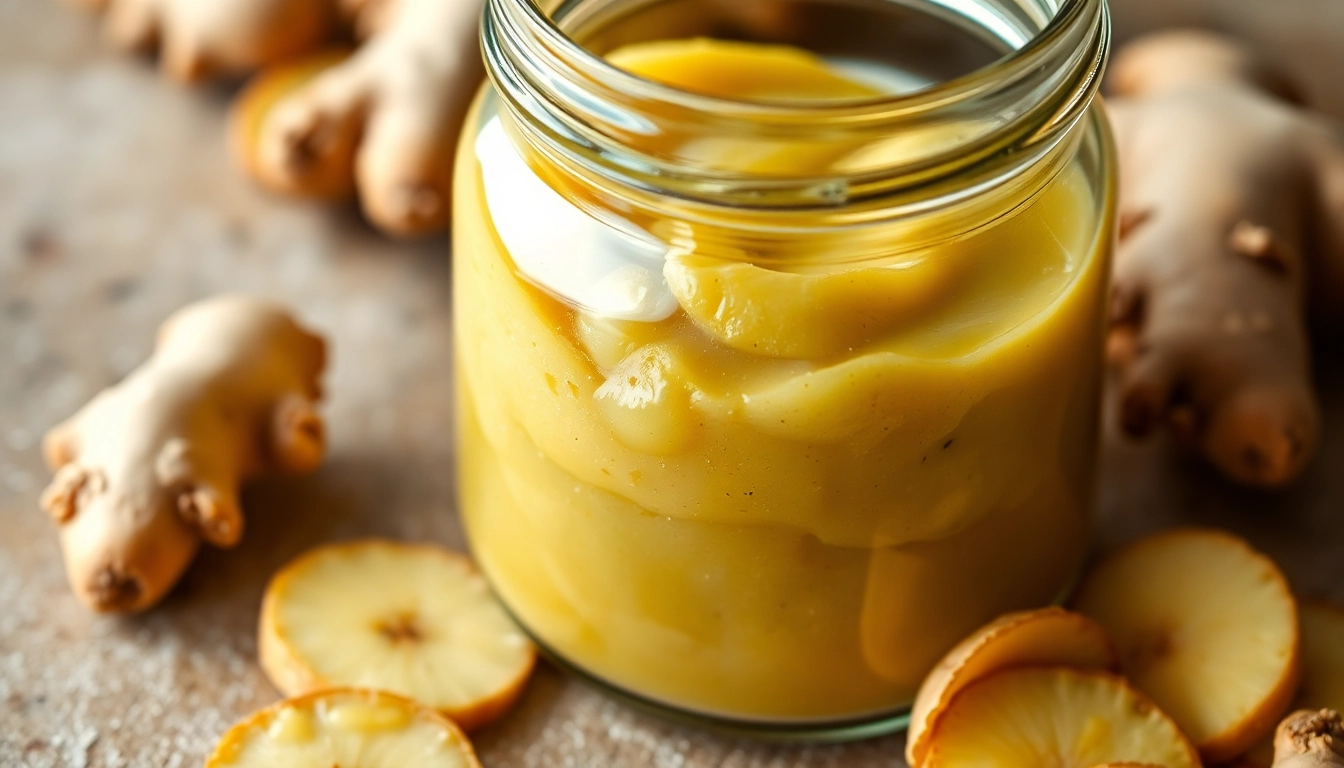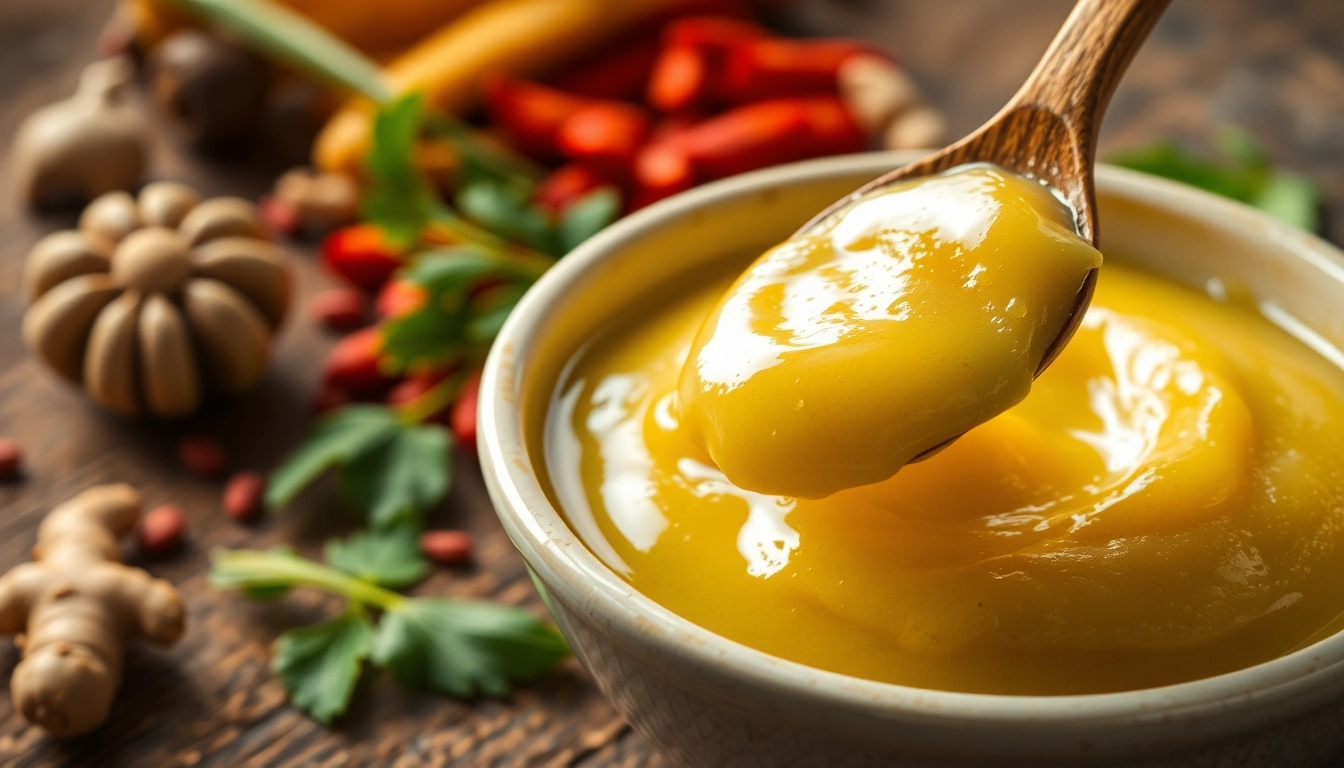Harnessing the Power of Ginger Paste: A Comprehensive Guide for Culinary Excellence
In the world of gastronomy, few ingredients evoke the warmth, aroma, and health benefits as effectively as ginger. Its versatility spans traditional recipes, innovative fusion dishes, health drinks, and beyond. Among the various forms of ginger, Ginger Paste has gained prominence for its convenience, concentrated flavor, and ease of use. This comprehensive guide delves into the multifaceted benefits of ginger paste, how to select the best quality product, and innovative ways to incorporate it into global cuisines. Whether you’re a professional chef, a home cook, or a health-conscious individual, mastering the art of using ginger paste can elevate your culinary creations and wellness routines alike.
Understanding the Benefits of Using Ginger Paste in Culinary Creations
Health and Nutritional Value of Ginger Paste
Ginger is renowned for its potent bioactive compounds, including gingerol, shogaol, and paradol, which impart anti-inflammatory, antioxidant, and digestive benefits. When processed into paste form, ginger retains its nutritional integrity while offering enhanced bioavailability due to easier digestion and absorption. Regular consumption of ginger paste can bolster immunity, alleviate nausea, reduce muscle soreness, and support metabolic processes. Moreover, it is an excellent addition to diets aimed at managing chronic conditions like arthritis, cardiovascular health, and even certain metabolic syndromes.
Flavor Profile and Culinary Versatility
Ginger paste possesses a vibrant, pungent aroma with a warm, peppery flavor coupled with subtle sweetness. Its concentrated nature ensures intense flavor infusion into dishes with minimal quantity, making it an ideal ingredient for sauces, marinades, and spice blends. Its versatility extends across numerous cuisine types—from traditional Indian curries and chutneys to Asian stir-fries, baked goods, and beverages. The smooth texture of ginger paste allows for uniform distribution, avoiding fibrous bites and ensuring consistent flavor in every mouthful.
Comparison with Fresh Ginger and Other Forms
While fresh ginger offers a lively and zesty flavor, it necessitates peeling and grating, which can be time-consuming and inconsistent. Dried ginger powder, though flavorful, often loses some volatile oils during processing, resulting in a milder aroma. Ginger paste bridges these gaps by providing a convenient, shelf-stable alternative that preserves essential oils and flavor compounds. It enables quick culinary applications, reduces prep time, and maintains a fresh, robust taste that’s difficult to replicate with powdered forms. For health-focused consumers, ginger paste, especially when manufactured by certified companies like Spice Nest, ensures purity and authenticity, adding a layer of trust to your purchases.
How to Choose the Best Ginger Paste for Your Kitchen Needs
Factors to Consider: Quality, Authenticity, and Certification
Selecting a premium ginger paste starts with scrutinizing the quality parameters. Certified brands such as Spice Nest adhere to rigorous manufacturing standards, ensuring the absence of preservatives, artificial additives, or adulterants. Certifications from recognized authorities guarantee purity, safety, and consistent flavor. When assessing product quality, look for clear labeling with ingredient lists, extraction methods, and manufacturing date. Authentic ginger paste should be made from high-quality ginger root, processed without excessive heat or chemical interference, which could degrade its natural properties.
Reading Labels and Ingredient Lists Effectively
A trustworthy ginger paste label should highlight minimal ingredients, preferably just ginger and natural preservatives like citric acid. Beware of products with added coloring, flavor enhancers, or artificial preservatives that might compromise nutritional value. Natural, preservative-free options often have a shorter shelf life but guarantee higher purity. For health-conscious users, choosing organic-certified ginger paste from reputable manufacturers ensures that the product meets stringent organic standards and is free from pesticide residues or harmful chemicals.
Trusted Brands and Certification Indicators
Certification seals such as ISO, FSSC, or organic certifications indicate adherence to international quality standards. In India, companies like Spice Nest not only invest in advanced manufacturing processes but also actively participate in global food expos, showcasing their commitment to quality and authenticity. Such brands typically display government-approved certficates, traceability records, and hygiene certifications on their packaging, providing confidence to consumers seeking premium ginger paste.
Incorporating Ginger Paste into Various Cuisine Types
Traditional Indian Dishes and Spice Blends
Ginger paste is a cornerstone in Indian cuisine, forming the base of numerous masalas, curries, and pickles. It adds depth to dishes like chicken curry, dal, and masala chai. Using ginger paste simplifies the cooking process by allowing quick flavor infusion, especially in slow-cooked recipes. Its consistent potency ensures traditional authenticity in spice blends like ginger-garlic paste, which is crucial for dishes reputed for their pungency and aroma.
Asian Fusion and Modern Recipes
In contemporary kitchens worldwide, ginger paste lends itself to Asian-inspired dishes such as stir-fries, sushi accompaniments, and noodle recipes. It seamlessly integrates into marinades for seafood, meats, and vegetables, enhancing umami qualities. Additionally, its convenient form encourages experimentation—such as ginger-infused smoothies, gluten-free baked goods, or innovative sauces—adding a punch of wellness and flavor in every bite.
Healthy Snacks and Beverages with Ginger Paste
Beyond main dishes, ginger paste is instrumental in creating health-boosting drinks like ginger lemon teas, detox smoothies, and herbal infusions. Its anti-inflammatory properties can soothe sore throats and support digestion. In snack preparations, ginger paste adds an aromatic kick to energy bars, healthy cookies, or homemade candies, aligning with the rising consumer demand for functional foods.
Tips for Proper Storage and Handling of Ginger Paste
Optimal Storage Conditions to Maintain Freshness
To preserve the flavor, aroma, and health benefits of ginger paste, store it in an airtight container in the refrigerator. Typically, optimal storage occurs at temperatures around 4°C (39°F). For long-term storage, many manufacturers provide sterilized and canned options that extend shelf life without compromising quality. Once opened, always use clean utensils to avoid contamination and consume within the recommended expiry period to ensure freshness.
Signs of Spoilage and When to Discard
Detecting spoilage involves checking for changes in color, texture, or smell. Fresh ginger paste should have a vibrant color, pungent aroma, and firm texture. Discard if you notice mold, an off-odor, or any sliminess, as these indicate microbial growth. Proper storage minimizes spoilage, but when in doubt, it’s safer to discard and replace for health safety.
Best Practices for Extending Shelf Life
Use dry, clean spoons for scooping, avoid leaving the container open for extended periods, and consider vacuum-sealing or transferring into smaller portions to prevent oxygen exposure. Some brands also offer frozen ginger paste options; freezing can significantly extend shelf life without compromising flavor integrity.
Measuring, Substituting, and Maximizing Flavor in Cooking
Accurate Dosage and Conversion Tips
As a general guideline, one teaspoon of ginger paste roughly replaces a 1-inch piece of fresh ginger root. For precise recipes, especially in baking or delicate sauces, use measuring spoons or digital scales. Adjust quantities based on desired intensity; remember that ginger paste is more concentrated than fresh ginger, so less is often more.
Creative Uses to Enhance Taste and Aroma
Ginger paste can elevate dressings, marinades, and even desserts. Mix it into yogurt or smoothies for a zingy twist. Use it in baking to add warmth to cakes and cookies. Incorporate into herbal teas or craft ginger-infused honey for a natural remedy and flavor enhancer. Experimenting with different cuisines allows you to discover innovative pairings—such as ginger in Mexican mole sauces or Mediterranean lamb marinades.
Recipe Examples Featuring Ginger Paste
- Ginger Chicken Curry: Sauté ginger paste with onions and spices, then add chicken and tomatoes for a flavorful, aromatic dish.
- Ginger Lemon Detox Drink: Mix ginger paste, lemon juice, honey, and water for a refreshing health tonic.
- Ginger Snap Cookies: Incorporate ginger paste into dough for spicy, crunchy cookies.

